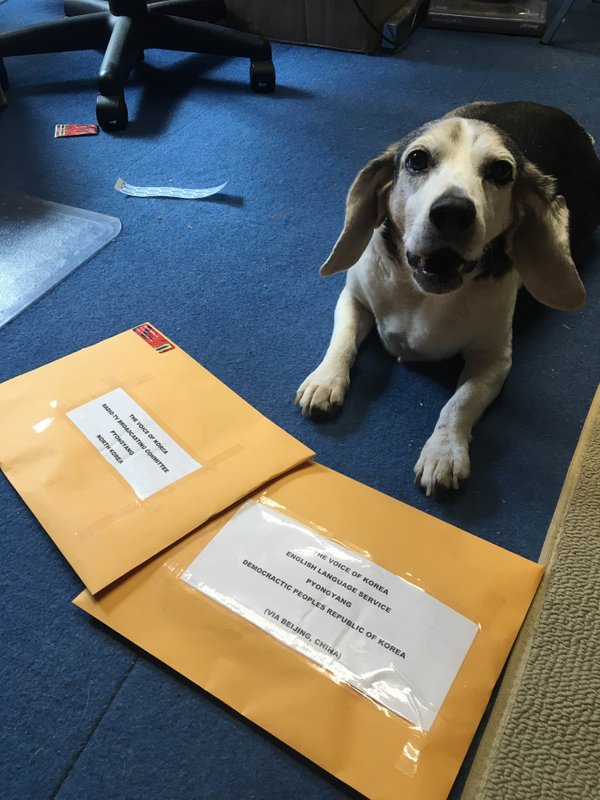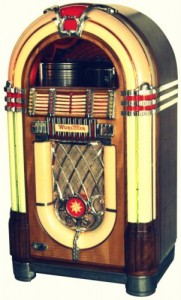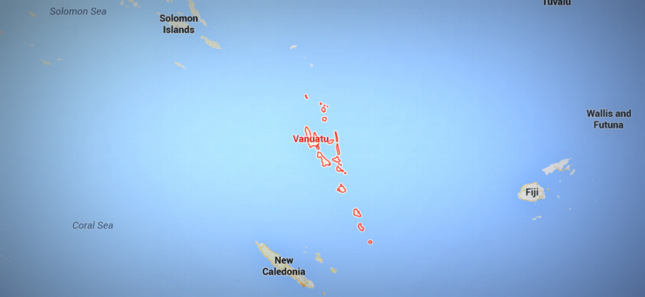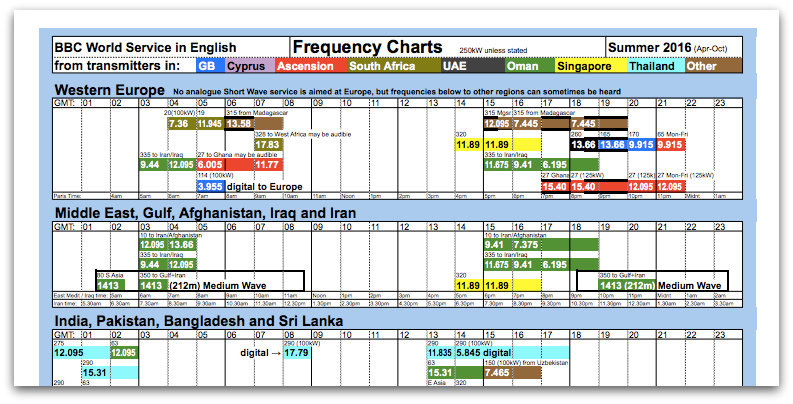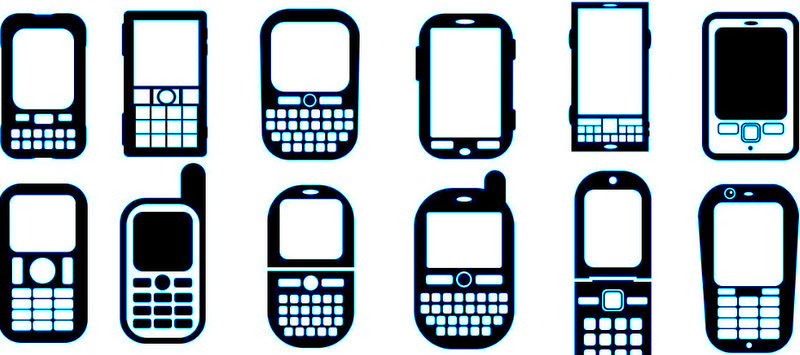I have a very unique DX location, mere feet from the banks of the Yukon River in Alaska’s Central Interior Region. I have logged about 2 dozen of North Korea’s shortwave frequencies: 2850 kHz, 3250 kHz, 3320 kHz, 6070 kHz, 6100 kHz, 6170 kHz, 6400 kHz, 7220 kHz, 7580 kHz, 9425 kHz, 9435 kHz, 9445 kHz, 9650 kHz, 9665 kHz, 9730 kHz, 9875 kHz, 11735 kHz, 11910 kHz, 11935 kHz, 121015 kHz, 13650 kHz, 13760 kHz, 15105 kHz, 15180 kHz and 15245 kHz.
As it turns out, one user from here helped me plot it, the shortest path from North Korea to the Midwestern USA is a line from Pyongyang right through the small village I live in! So that answers why some of their are so glaringly strong for me. But, I can in general, hear them all day everyday at some level on a frequency if I look hard enough and try hard enough to pick them up.
What I find odd is their “dirty/white noise carrier.” Let me explain: it’s noisy and I’m pretty sure it’s self induced, on purpose. Listen to this clip from April 6, 2016 I posted on Soundcloud: https://goo.gl/JFJSss
https://soundcloud.com/onairdjpaulwalker/voice-of-korea-11735khz-noisy-carrier
Listen to that noise that starts about 6 seconds into this clip, disappears at about 26 seconds and then comes back at 39 seconds. It disappears at 44 seconds and comes back at about 48/49 seconds. It disappears at 52 seconds and comes back at 1 minute 1 seconds, then the interval tune starts, gets interrupted and restarts again from the beginning.
To me, when the interval signal dies out and the noise goes with it, it’s almost like this white/dirty noise carrier is caused by whatever they are using as a studio to transmitter link.
Now onto some other North Korea shortwave airchecks:
Here is an example of how wide their signals can be and what I have done to overcome interference. Here they are on 11865 kHz at 0946UTC on June 30th. I actually had to tune 2 kHz down to 11863 kHz to escape splatter from KNLS only 500 miles to my south. Audio here: https://goo.gl/iqKqoh
Now here’s a video from 0824UTC on May 5, 2016 showing the same programming on 9875 kHz, 11735 kHz and 13760. And if you look closely in the upper right hand corner of the video, you’ll see the signal level meter on my Tecsun PL880 showing how strong the signals on all 3 frequencies is. Video here: https://goo.gl/2MbE6Y
https://www.youtube.com/watch?v=Z7tckdZjkks
From March 26, 2016 at 1729UTC, this is KCBS Pyongyang signal on 3320 kHz that is reportedly only 5 kw. Video/audio here: https://goo.gl/2MbE6Y
Here is the English service on 15180 kHz from March 4, 2016 at 0350UTC. Pay close attention to the signal level meter and listen to the audio. This is strong! Audio and video here: https://goo.gl/s5xHYm
Here’s the English service of Voice of Korea on 9730, pretty decent signal with some female announcer talking at times. Audio here: https://goo.gl/W0mfs7
And on 11680 kHz, here’s KCBS Pyongyang, their state broadcaster and a voice we DX’ers are probably very familiar with. Someone that a friend lovingly calls, “Miss Frantic News Anchor”. Audio here: https://goo.gl/3cxu76 (Voice of Korea is their “international service” and KCBS is their “state service.”)
The Voice Of of Korea broadcasts in Chinese, Japanese, Korean, English, Spanish, French & German. Here is their Russian broadcast on 11735 kHz from 0828UTC on March 13, 2016. Audio here: https://goo.gl/6L7bnu
This is the Voice Of Korea on 13760 kHz signing on their Spanish service back on March 11, 2016 at 0430UTC. Audio here: https://goo.gl/TacYT0
A few tips when looking for The Voice Of Korea on your shortwave radios:
The service always begins within seconds of exactly 30 minutes after the hour, with the interval tone interspersed with an announcer/announcers saying “The Voice Of Korea” in whatever language service is about to sign on. At about 24 after, a sign off message lasting roughly 3 minutes is read in the language of whatever service was on. If the frequency you’re listening will switch to another service at 30 after the hour, the carrier goes dead/unmodulated for almost exactly 3 minutes before the next language comes on. And the process is repeated over again.
The English service sign off message is read by a male in very stilted, very proper english. It sounds as if the French, German and Spanish service is voiced by people who could very well be native speakers of those languages.
There is no carrier being turned off or fill music being used between different language services on Shortwave. And when they go dead air, the carrier will be extremely noisy and dirty, see my first audio clip in this post.
The KCBS Pyongyang broadcasts, which are their domestic/state broadcast go from top of hour to top of hour and I don’t believe there is any dead air in between.
One other thing, Pyongyang time (an “official” time zone) is UTC/GMT +8 hours 30 minutes and that’s the time zone KCBS Pyongyang followed, but it appears Voice of Korea follows the UTC+8 time zone deal. Voice of Korea doesn’t signify top of hour with any tones, but KCBS Pyongyang does, as I’ve heard them do it 3 times. Listen to the time tones on KCBS Pyongyang 3320 kHz here: https://goo.gl/2MbE6Y (They are at the very beginning of the clip)
North Korea’s shortwave signals, in my observations, have followed the time and frequency schedules they are supposed to. Some sites say the language service and frequency don’t match up, but that is likely more a problem with the VOK website than the shortwave broadcaster itself. If a frequency is listed as “on,” it’s going to be on unless a power outage or transmitter malfunction occurs.
I live in Galena, Alaska which is a village of 500 people about 300 miles west of Fairbanks and 300 miles east of Nome. I work as the Program Director for community radio station KIYU which celebrated it’s 30th birthday on July 4th, 2016. Having provided 30 years of true community service, now serving eight villages up and down the Yukon River.
On shortwave, I don’t log everything I hear–I try to keep my log to those stations that are rare, unique or interesting for one reason or another. Everything I do log gets recorded and you can find it on my YouTube Channel and sometimes on my SoundCloud channel.
My DX’ing gear includes the Tecsun PL880, an Emtech ZM2 Tuner, a 225 foot long wire and a Wellbrook ALA1530LNP. I record my catches using the VRP7 (Voice Recorder Pro 7) app on my Iphone. I can then email that mp3 to myself or convert it to a Youtube link for sharing with others.
 Paul Walker is located in Galena, Alaska and is a regular contributor to the SWLing Post. Be sure to check out Paul’s YouTube channel and SoundCloud channel where everything he logs is recorded and posted. Click here to read his other contributions on the SWLing Post.
Paul Walker is located in Galena, Alaska and is a regular contributor to the SWLing Post. Be sure to check out Paul’s YouTube channel and SoundCloud channel where everything he logs is recorded and posted. Click here to read his other contributions on the SWLing Post.

